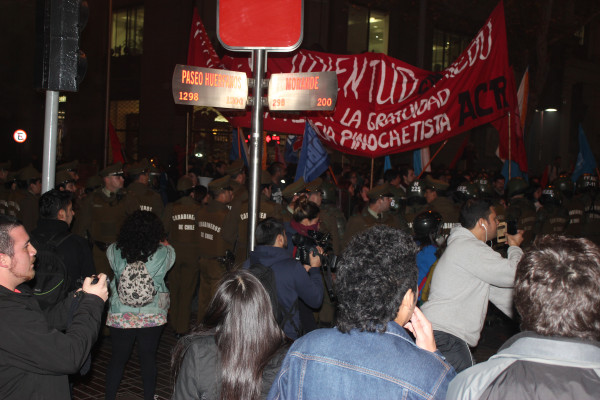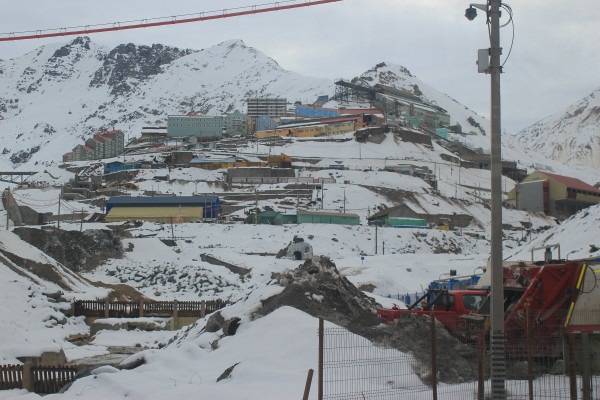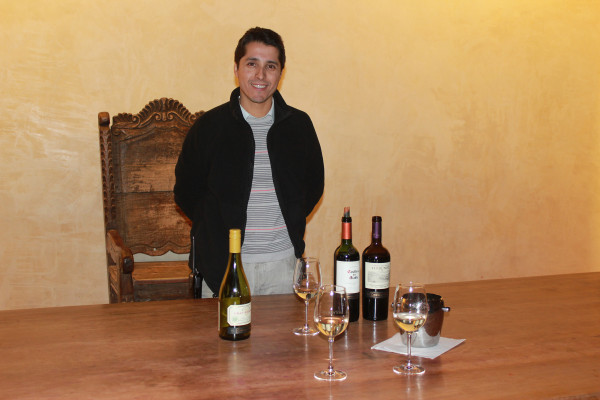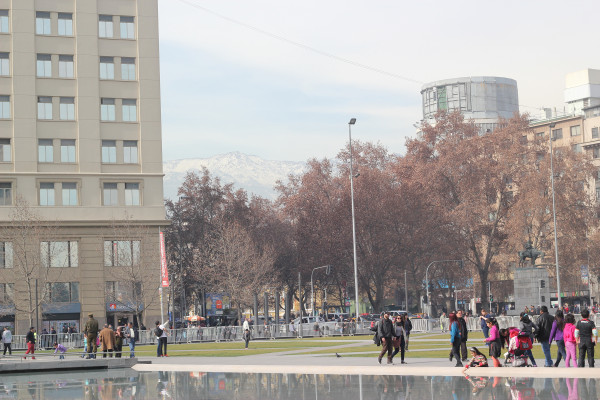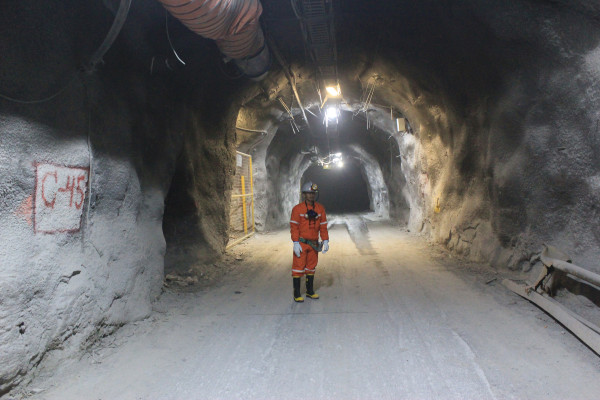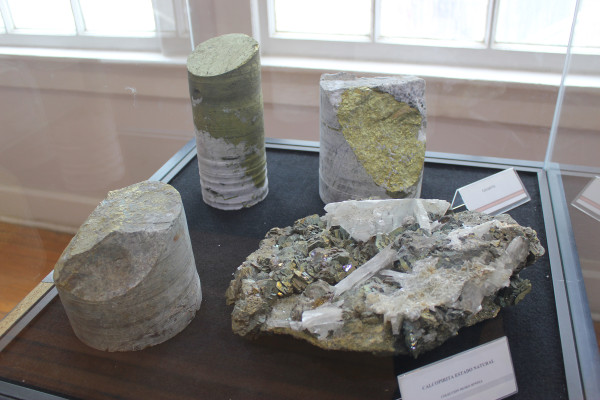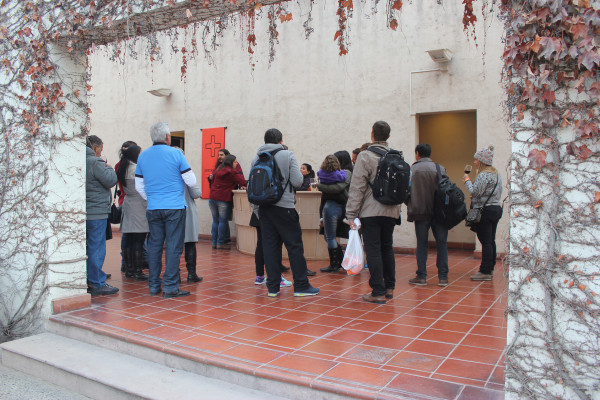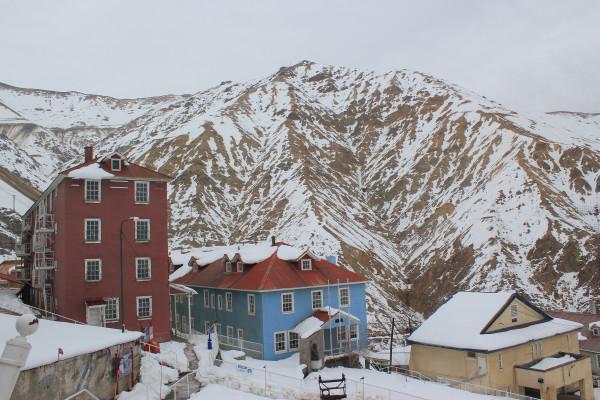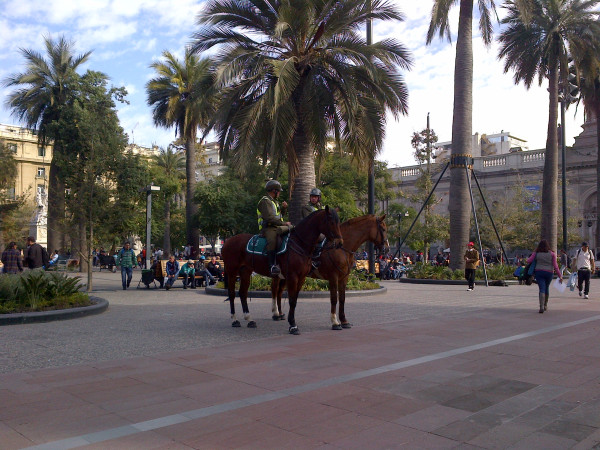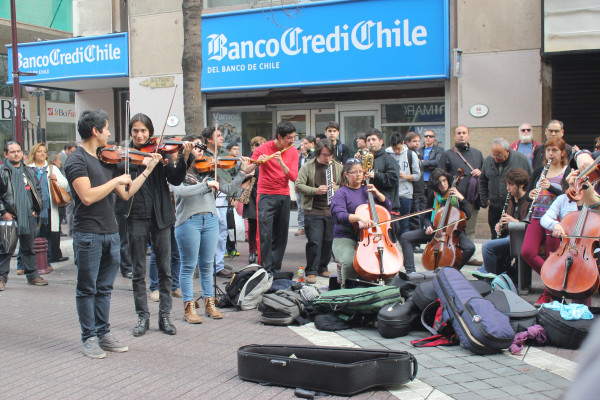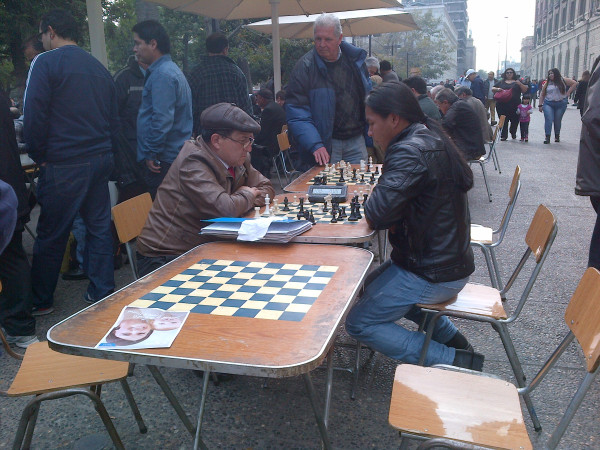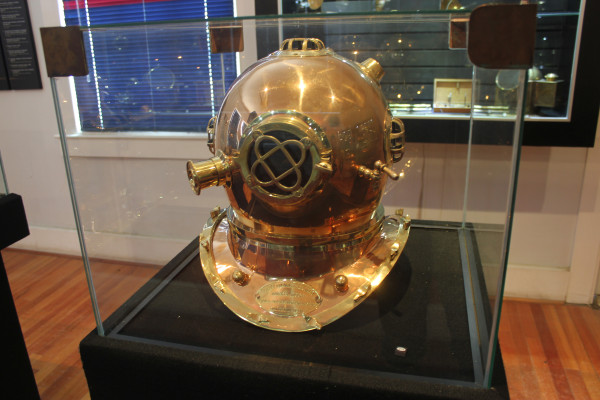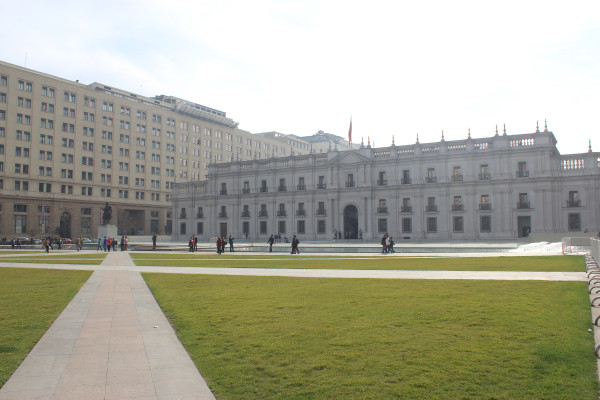No one could have told me that minutes after discussing the niceties of the Guyana-Chile relationship with Chile’s Minister of Foreign Affairs, I would be sprinting down Santiago’s darkening streets, eyes teary from tear-gas, trying to discern friend from foe.
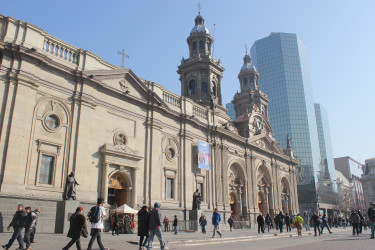
But there I was, moving faster than a skier down the Andes slopes, eyes scanning the streets for any roaming, bottle-hurling protesters even as Chile’s police, the Carabineros, armoured to a T, on foot and in vehicles, raced up and down the streets looking for the demonstrators who had scattered after charging police discharged tear-gas into the crowd.
In my travels, I have sometimes found myself in the oddest of situations like getting stranded in a mountain village for a week because the plane could not land in the foggy conditions. This was different.
I was in Chile at the invitation of the Chilean government which is developing closer relations with the Caribbean and, having a relatively low profile here, is keen to make itself better known. It is also opening an Embassy in Guyana, its first since the establishment of formal diplomatic ties between the two countries in 1971.
Chile is the highest ranked South American country in the UNDP’s Human Development Index and I expected it to be relatively developed but, well, South American; Brazil with a dash of Miami.
Santiago took my breath away. Chile’s capital is in the middle of the country nestled in a valley under the Andes Moun-tains, and being in the Southern Hemis-phere, was in the middle of winter when I arrived in July. With the temperature in the single digits, every foggy breath I took stripped every thought ‒ even that of American Airlines leaving my luggage in Miami ‒ from my mind. It was cold, even more than Norway in the spring.
“We have to get you a jacket,” Carolina Faune my contact at the Ministry of Foreign Affairs, said, noticing my shivers. The cold aside, Santiago is a city that captures the imagination. With 7.2 million people out of the Chilean population of 17 million, the Santiago Metropolitan Region sprawls throughout the valley and despite the country being part of the Ring of Fire –the earthquake and volcano prone region that spans the Pacific basin – Santiago has the tallest building in Latin America, the Gran Torre Santiago. With buildings colonial and modern, sometimes side-by-side, and well-developed infrastructure, it seemed almost like Europe.
Chile is the largest producer of copper in the world and I was taken to the largest underground mine in the world, El Teniente, located high in the snowy Andes Mountains. Dozens of huge buses take the workers on paved roads into the mines. The mine has 4700 kilometers of tunnels and the arched structures were as high as a three-storey building and wide enough for trucks to drive through.
In an earthquake – a source of major trepidation for me given that we were hundreds of metres inside a mountain – workers assured that it was safer to be in the mine than outside. I was sceptical but they were the ones with the experience. There had been tragedies at the mine before but safety codes have been overhauled and strictly enforced, and they remain vigilant. Nevertheless, emerging from underground to see the show reflecting the sunlight drew a sigh of relief from me. It is difficult to get a job at the mines. Employees are well paid and most work their way up and do not leave.
The mining process itself if largely automated and in one instance for example, an operator sat in a specially adapted chair, watching a video feed and used the controls built into the chair to operate a piece of machinery located in a different part of the mine, as it broke the ore into smaller pieces.
Chile’s copper exports account for more than half of total goods exported by Chile and signs of its importance are everywhere. Tourist shops and street vendors sell shiny copper trinkets, signs proclaim the buildings that sport a bit of copper cladding, even socks and hospital gowns are made with copper fibre owing to its antibacterial properties. Researchers are exploring even more applications.
Sewell, the abandoned copper town in the Andes, is being painstakingly restored and draws tourists. Its copper museum traces the development of mining at El Teniente and copper usage throughout history with genuine artifacts obtained for display.
But Chile is not only about copper. The country is a major producer and exporter of food which is the second largest export sector in the country after copper. Chile is a large producer of fish and seafood products, as well as wine, dairy and meat products and by-products, fruits and vegetables. Given its relative isolation from the rest of South America due to the Andes Mountains as well as strict government policies, it is mostly free of pest and disease.
Its wines are world-famous. I was taken on a tour of the Concha y Toro winery which is one of Latin America’s major wine exporters and is present in over 130 countries. It has been described as one of the world’s most important wine brands. Among the tourists the winery attracts, many are Brazilian tourists so apart from the Spanish and English-speaking guides; there are Portuguese-speaking guides as well.
The Casillero del Diablo or Devil’s Cellar story has to be experienced and being locked in the cellar with barrels and barrels of wine waiting to see the Devil himself, was a hair-raising experience. You get to taste the wine afterwards though.
To explore Chile properly would take months if not years. The country has a range of climates and attractions but given the narrow girth of the country, some can be found relatively close to one another. You can, for example, go from skiing on the Andes Mountains to the Pacific coast within hours. The attractions are varied from glaciers, fjords, forests, volcanoes, beaches to museums, galleries, theatres, malls and nightclubs.
Santiago’s vibrant cultural life brought home to me how limited Georgetown is in that respect. Just in front of the Presidential Palace, for example, there is an underground museum that hosts various exhibitions and in the plazas, artists, musicians and others add colour to an already colourful city.
After a week of meeting various officials from various Ministries, on my last day, I wanted to visit Valparaíso; the city by the Pacific Coast immortalized in many books but decided it would be cutting it too close as I had an interview with Chile’s Minister of Foreign Affairs Heraldo Muñoz in the afternoon.
So with my friend Moisés, I wandered the city centre then went to the interview.
Twilight softly covers Santiago in the winter. The sun rises around 9 am and sets around 7pm, and the walking streets (no vehicles allowed) fill with people walking to the subway or bus stops to get home as the winter sun, nearly invisible for much of the day, sinks beyond the tall buildings.
After the interview, I hopped over to the Centro Cultural Palacio La Moneda ‒ a museum located underground next to the Presidential Palace to view the contemporary art exhibit one last time. My flight out of Chile was in four hours.
My first thought was that it was just a march. There was a man beating a drum, walking back and forth in front of me, young people chanting, flags and banners waving in the deepening chill, a line of Carabineros at the ready blocking them from moving further up the street. I turned the corner, said ‘hey’ to the hotel security then as the scene looked interesting with more and more media crews arriving, snapped some photos. I’m a journalist after all, I run towards activities not away. Passerbys were snapping photos and did not seem alarmed.
There is a moment in every traveller’s life when the adrenaline goes into overdrive.
In one second, the crowd surged, the Carabineros charged, bottles shattered not five feet away from me, gas clouds erupted, bottles continued to fly and the street was blocked. The news photographers took off and feeling the tear gas, I zoomed away too. It was mayhem. Down the street, the clouds of tear smoke had grown, protesters had scattered and the Carabineros were in pursuit. Sirens wailed. For some reason, the tear smoke did not affect my eyes as much as it did my skin.
With the temperature dropping, the streets dark and filled with Carabineros chasing protesters, phone battery dead and my airport ride expected at any time, I was in a bind. My hotel’s entrance was blocked off and around the block, was no different as the Carabineros blocked the streets to keep the protesters contained.
My hotel was located in a galleria, a huge building filled with multiple stores and I managed to slip in one entrance before the steel gates clanged shut. Then it was a waiting game as the Carabineros chased the protesters. The Chilean journalists are apparently used to this sort of thing as more than one was attired in gas masks – one female TV journalist ran swiftly in heels and gas mask, her hair and clothes flowing behind her.
My hotel’s entrance was not 30 feet away and I could not get to it. Tear gas still filled the air and I waited. In the melee earlier, a photographer had told me that the people were protesting the death of a miner shot dead by the police in a protest in the north. All the time I had been trying to find parallels between the two countries. Finally, I found it. The spine-tingling, adrenaline-pumping excitement of a protest.
Chile is a great country. With a commodity-based economy like Guyana, it has managed to lift itself to the top of the table. In 2010, it became the first country from the continent to be accepted into the Organization of Economic Cooperation and Development (OECD) which comprises the world’s top ranked economies and millions of Chileans have been lifted out of poverty.
Chile has its problems: students are still battling for a better university system, inequality has to be tackled, and sometimes law enforcement is seen as heavy-handed. Given my experience with Guyanese policymakers, I was surprised at the frankness with which senior Chilean government officials acknowledged the issues Chileans face. They also made it clear that they were working to create solutions. Given their experience with the Pinochet dictatorship, their stance on human rights and democracy is also very strong.
Chile, on the other side of South America, is not very accessible for Guyanese at the moment. To get there I had to fly to Trinidad then Miami then finally to Santiago. But it was worth it. It is different from Guyana in so many ways and there are many lessons that the country can learn. With an Embassy being established here, it can be expected that the links would increase at some point and both Chilean and Guyanese would be able to experience each other’s country. As the minister said, the possibilities are many. Just don’t get caught in a protest.
